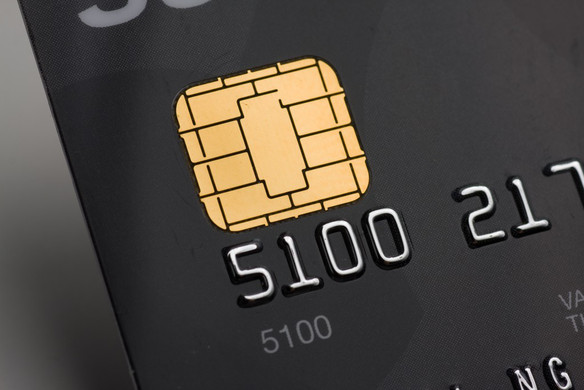As you might have heard, the United States is in the process of switching to chip-enabled credit cards (also known as EMV cards). The shift is primarily designed to prevent fraud—chip cards are way more secure than the magnetic stripe cards we carry now. We sat down with Stephanie Ericksen, Visa’s VP of Global Risk Products to get her take on what this all means for independent businesses.
How do chip cards work?
Chip cards store the cardholder’s account information in a computer chip on the front of the card, in addition to the magnetic stripe on the back of the card. Instead of swiping the card’s mag-stripe, the customer inserts the card into a slot in the chip reader at the point of sale so that the merchant’s terminal can read data from the chip.
How does chip technology enhance payment security?
Chip technology increases card security because they introduce an element of “dynamic authentication” into the transaction. When the card is inserted into the reader, the chip generates a one-time code, known as a cryptogram, which is used to process each transaction. Without a valid cryptogram, the transaction will not be approved. It is virtually impossible for criminals to duplicate this feature on a fake card, so they will no longer be able to use stolen account information (such as the data that hackers obtained through data breaches at major retailers over the last year) to produce counterfeit cards for in-store use. And all of this happens without your customers having to do anything extra.
What do I need to do to accept chip cards?
To accept chip cards, you’ll need to have a point-of-sale terminal that can read them.
How can American sellers best prepare for the upcoming nationwide shift to chip?
The best way for businesses in the U.S. to prepare for the upcoming nationwide shift to chip is to make sure that you are educated and your point of sale equipment is ready to accept chip cards. For a more comprehensive overview of this topic, please visit VisaChip.com.
Much of the rest of the world switched to chip cards years ago. Why has it taken the U.S. so much longer?
For the last several decades, payment security in the United States’ relied heavily on the use of predictive analytics to review every transaction and catch fraud in real-time. As the U.S. developed very sophisticated fraud detection capabilities, most other countries did not have the necessary telecommunications infrastructure to do this, so they adopted chip technology instead. Now, it is clear that both approaches should be used in concert to protect consumers. While the U.S. is now beginning its adoption of chip technology, other countries are also investing in smart analytics to detect suspicious transactions in real-time.
Aside from the benefits of added security, what additional benefits will new chip technology provide buyers and sellers?
In addition to security, chip cards will make it easier for Americans traveling abroad and for international travelers visiting the U.S. to use their payment cards, as much of the rest of the world already uses chip technology. At an industry level, investments that banks, processors and merchants have been making to be able to process chip transactions are also supporting innovations such as mobile payments. Mobile solutions such as near field communications (NFC) that make it possible to wave a mobile phone at a store to make a payment is based on the same underlying technology as chip cards.
To learn more about the shift to chip cards, watch our primer video on the subject. Square will be offering EMV-compliant solutions. You can sign up here to be notified when they’re ready for pre-ordering.
![]()










